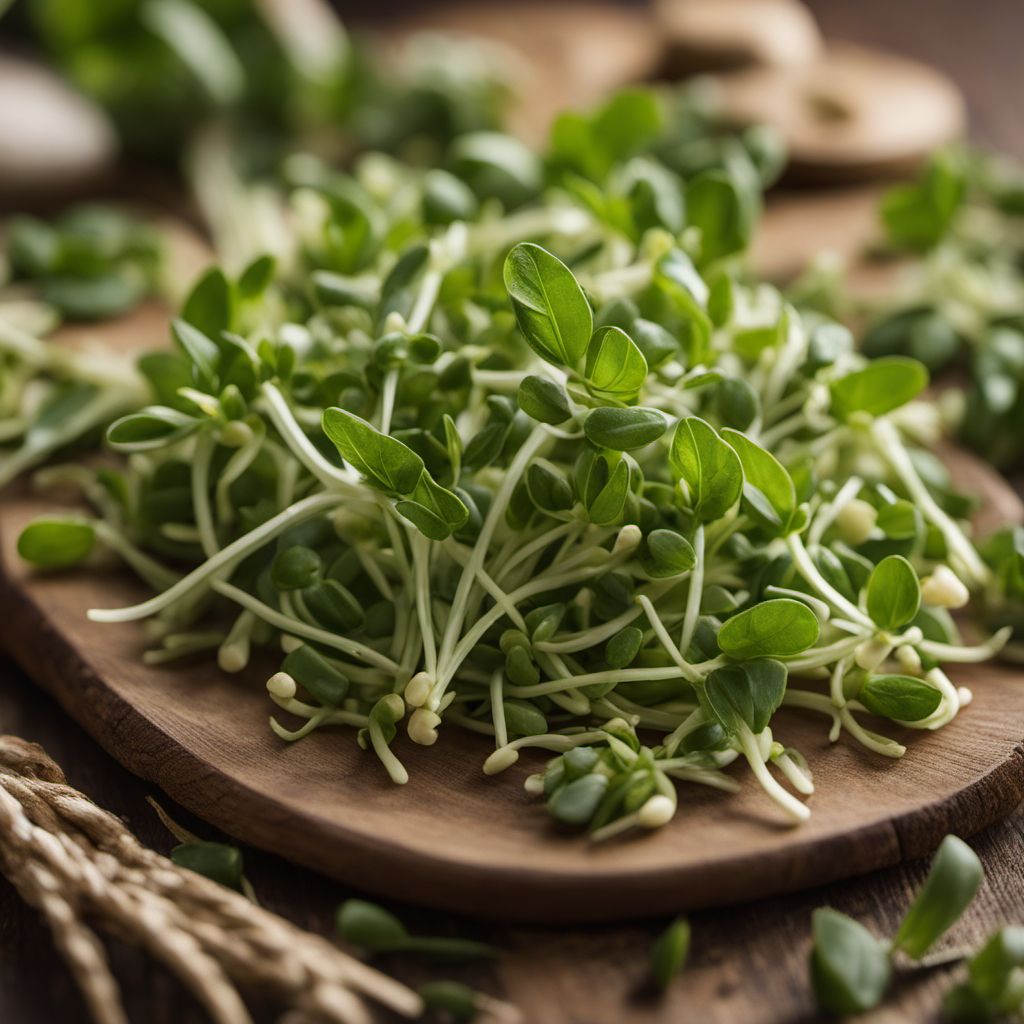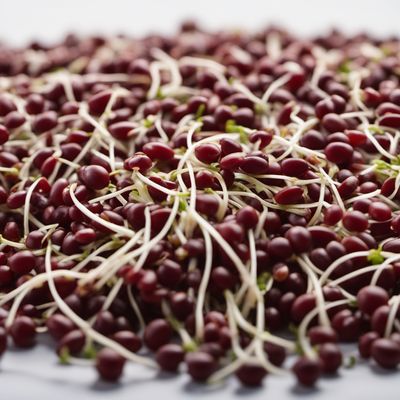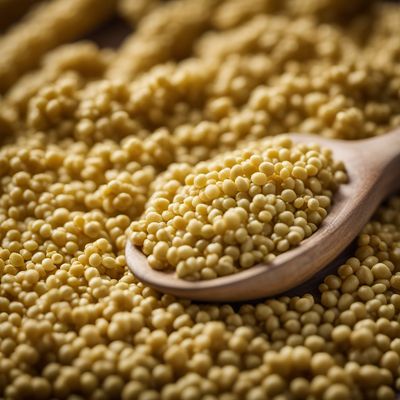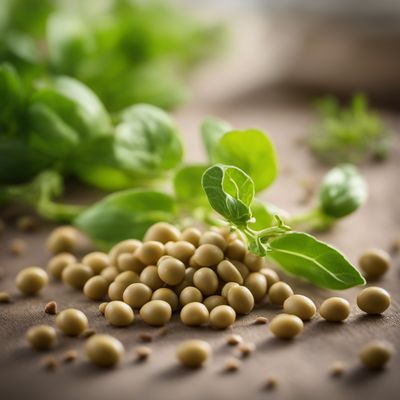
Ingredient
Fenugreek sprouts
The Mighty Sprouts: Unleashing the Power of Fenugreek
Fenugreek sprouts are small, tender shoots that emerge from fenugreek seeds when they are soaked and germinated. These sprouts have a crisp texture and a slightly bitter, nutty flavor. They are typically pale green in color and have a delicate appearance. Fenugreek sprouts are commonly used in salads, stir-fries, and sandwiches, adding a fresh and vibrant element to the dish.
Origins and history
Fenugreek, also known as Trigonella foenum-graecum, is native to the Mediterranean region and has been cultivated for thousands of years. It has a rich history in both culinary and medicinal traditions, with references to its use dating back to ancient Egypt and Greece. Fenugreek sprouts have been a staple in Indian and Middle Eastern cuisines for centuries, where they are valued for their unique flavor and health benefits.
Nutritional information
Fenugreek sprouts are a nutritional powerhouse, packed with essential vitamins and minerals. They are a good source of protein, fiber, iron, and magnesium. Additionally, they contain antioxidants and have been associated with various health benefits, including improved digestion and blood sugar control.
Allergens
Fenugreek sprouts may cause allergic reactions in some individuals, particularly those with allergies to legumes or peanuts.
How to select
When selecting fenugreek sprouts, look for fresh, vibrant shoots with crisp leaves. Avoid sprouts that appear wilted or have a slimy texture. It is also important to choose organic sprouts whenever possible to ensure they are free from pesticides or other contaminants.
Storage recommendations
To maintain the freshness and quality of fenugreek sprouts, store them in a sealed container or a plastic bag in the refrigerator. They can stay fresh for up to a week, but it is best to consume them within a few days for optimal flavor and texture.
How to produce
To produce fenugreek sprouts at home, soak fenugreek seeds in water overnight. Drain the water and rinse the seeds thoroughly. Place the seeds in a sprouting tray or a jar with a mesh lid. Rinse the seeds twice a day and keep them in a warm, dark place. Within a few days, the seeds will sprout, and you can harvest the fenugreek sprouts.
Preparation tips
Before using fenugreek sprouts, rinse them thoroughly under cold water to remove any dirt or debris. They can be enjoyed raw in salads or added to sandwiches for a refreshing crunch. Fenugreek sprouts can also be lightly sautéed or stir-fried to soften their texture and mellow their bitterness. Experiment with incorporating them into soups, stews, or even as a topping for pizzas or tacos to add a unique twist to your dishes.
Culinary uses
Fenugreek sprouts are commonly used in Indian cuisine, where they are added to curries, dals, and vegetable dishes for their distinct flavor and texture. They can also be used as a garnish for soups or mixed into salads for added crunch and freshness.
Availability
Fenugreek sprouts are commonly available in regions where fenugreek is cultivated, such as India, the Middle East, and parts of Europe. They can also be found in specialty grocery stores or health food stores in other regions.
More ingredients from this category

Radish sprouts
The Zesty Microgreens: Exploring the World of Radish Sprouts

Barley sprouts
The Nutritional Powerhouse: Barley Sprouts Unveiled

Rice sprouts
The Nutritional Powerhouse: Rice Sprouts

Adzuki bean sprouts
Vibrant Sprouts of Asia

Millet sprouts
The Nutritional Powerhouse: Millet Sprouts

Chickpea sprouts
The Nutrient-Packed Sprouts

Common bean sprouts
The Crunchy Delight: Exploring Common Bean Sprouts

Lentil sprouts
The Sprouting Powerhouse

Mustard sprouts
The Zesty Green Delight